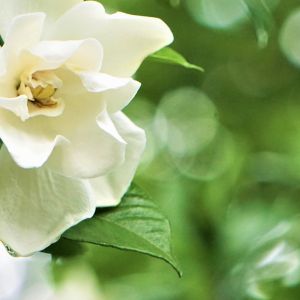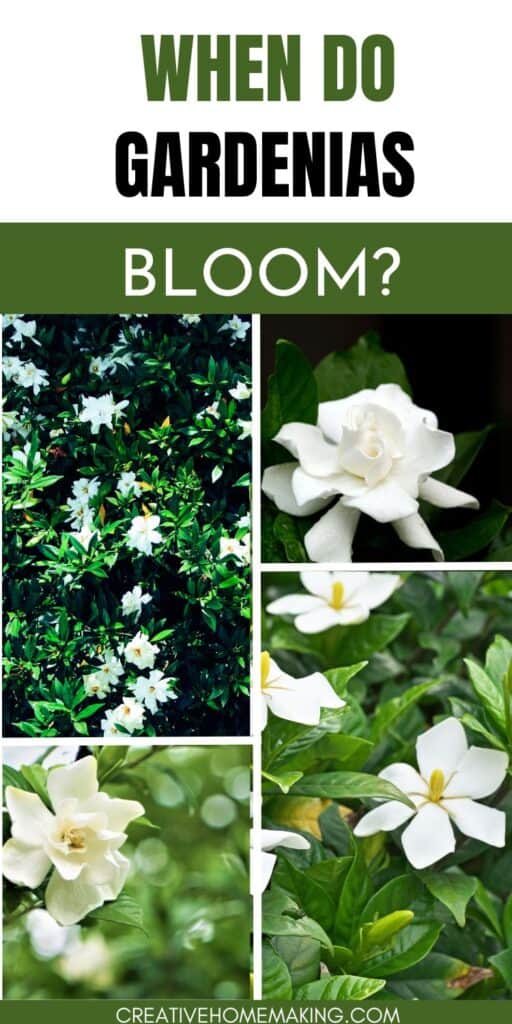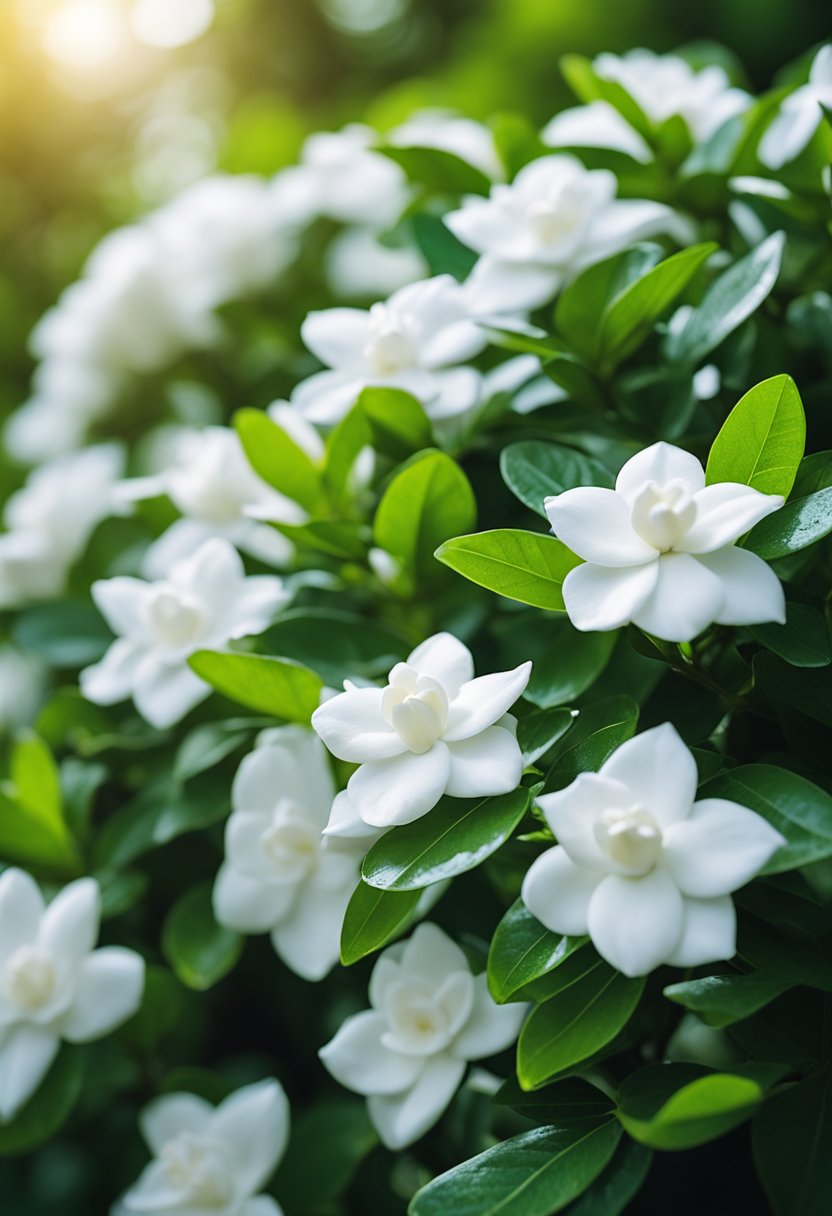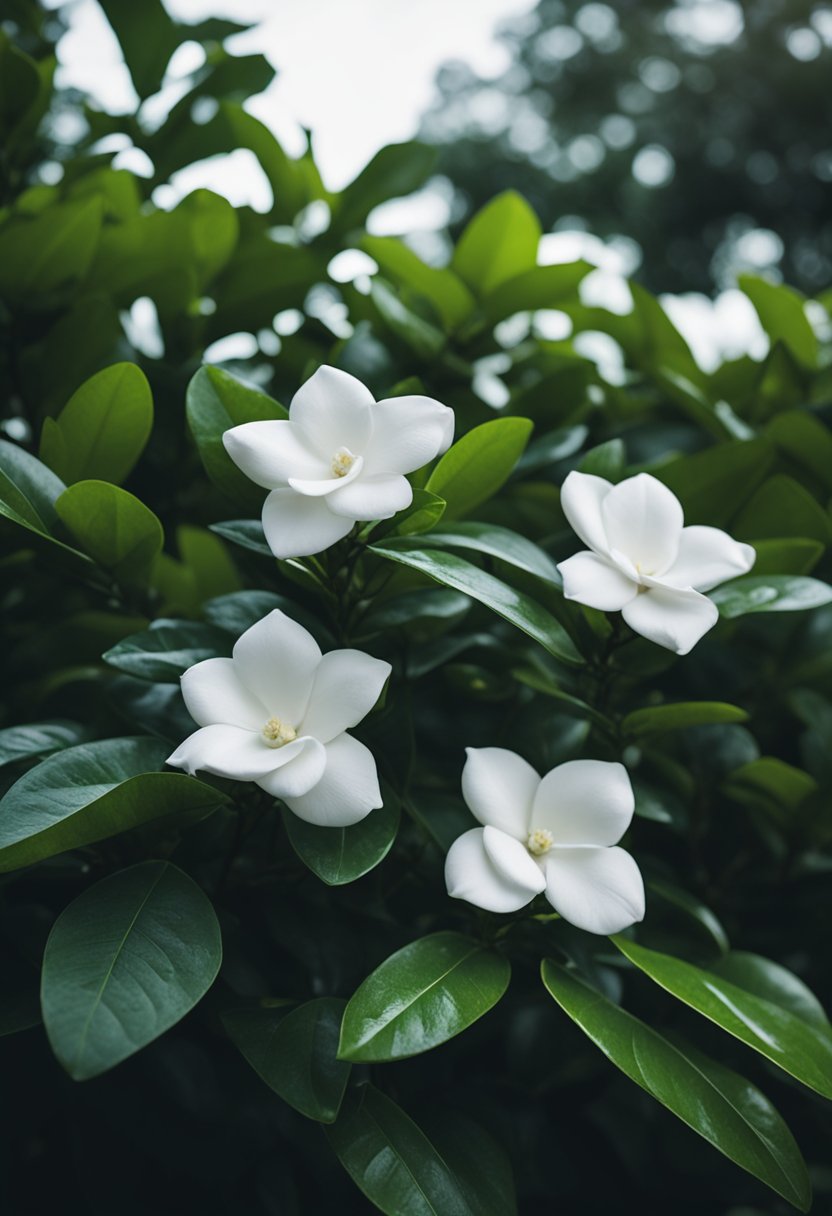If you’re a garden enthusiast, you may be wondering when gardenias bloom. Gardenias are known for their beautiful white flowers and sweet fragrance, making them a popular choice for gardens and indoor plants alike. However, the timing of their bloom can be a bit tricky to predict.
This post may contain affiliate links.
Generally, gardenias bloom in late spring and early summer. This is when the weather is warm and the days are long, providing the ideal conditions for these plants to thrive.
However, the exact timing of their bloom can vary depending on a variety of factors, including the climate, the amount of sunlight they receive, and the specific variety of gardenia you’re growing.
If you’re eager to see your gardenias in bloom, there are a few things you can do to encourage their growth. Providing plenty of sunlight, regular watering, and proper fertilization can all help to ensure that your gardenias are healthy and ready to bloom when the time comes.
With a little bit of patience and care, you can enjoy the beauty and fragrance of gardenias in your garden or home.
Understanding Gardenias
Gardenias are evergreen shrubs that are native to East Asia. They belong to the Rubiaceae family and are known for their fragrant, white flowers. Gardenias are popular among gardeners and landscapers due to their beautiful appearance and sweet smell.
Botanical Profile
Gardenias are known scientifically as Gardenia jasminoides. They can grow up to 6 feet tall and have a spread of 3 to 6 feet. Gardenias have dark green, glossy leaves that are about 2 to 4 inches long.
They produce flowers that are typically 2 to 4 inches in diameter and have a creamy white color. Gardenias are also known for their sweet, musky fragrance.
Related Article: What to Plant in April: A Guide to Spring Gardening
Ideal Growing Conditions
Gardenias prefer to grow in well-drained, acidic soil with a pH range of 5.0 to 6.0. They require partial shade to full sun exposure and need to be protected from strong winds.
Gardenias also require consistent moisture, but they cannot tolerate standing water. It is important to water gardenias deeply and frequently, especially during hot and dry weather.
If you are planning to grow gardenias, it is important to keep in mind that they are sensitive to cold temperatures. They cannot tolerate frost or freezing temperatures, so they should be protected during the winter months.
Gardenias also require regular pruning to maintain their shape and promote healthy growth.
Planting and Soil Requirements
Soil Preparation
Before planting your gardenias, it’s important to prepare the soil properly. Gardenias prefer acidic soil with a pH between 5.0 and 6.0.
You can test your soil’s pH level using a soil test kit. If your soil is not acidic enough, you can lower the pH level by adding sulfur or aluminum sulfate.
Related Article: Growing Grapes in Pots: Tips and Tricks for Successful Container Gardening
It’s also important to ensure that your soil is well-drained. Gardenias do not like to have their roots sitting in water, so if your soil does not drain well, you may need to amend it with sand or perlite.
To prepare your soil, dig a hole that is twice the size of the gardenia’s root ball. Mix in peat moss, compost, or other organic matter to improve soil texture and nutrient content.
Planting Techniques
When planting your gardenia, make sure to choose a location that receives partial shade. Gardenias prefer a location with morning sun and afternoon shade.
To plant your gardenia, gently remove it from its container and loosen the roots. Place the plant in the hole and backfill with soil, making sure that the top of the root ball is level with the soil surface.
Water your gardenia thoroughly after planting, and then apply a layer of organic mulch around the base of the plant to help retain moisture and suppress weeds.
By following these planting and soil preparation techniques, you can ensure that your gardenias will thrive and bloom beautifully.
Related Article: Lilacs Not Blooming: Possible Reasons and Solutions
Caring for Gardenias
Gardenias are beautiful and fragrant plants that require some special care to keep them healthy and blooming. Here are some tips on how to care for your gardenias.
Watering and Moisture
Gardenias need consistent moisture to thrive, but they don’t like to be overwatered. You should water your gardenias deeply once a week, but make sure the soil is well-drained.
If the soil is too wet, the roots can rot, which can kill the plant. You can also mist the leaves of your gardenias with water to increase the humidity around the plant, which they love.
Feeding and Fertilization
Gardenias are heavy feeders and need regular fertilization to produce healthy foliage and flowers. You can use a balanced fertilizer that is high in nitrogen to encourage growth, but make sure you don’t over-fertilize, as this can burn the roots.
You should fertilize your gardenias every 4-6 weeks during the growing season.
Related Article: When Do Lilacs Bloom?
Pruning and Maintenance
Pruning is an important part of gardenia care, as it helps to promote new growth and keeps the plant looking neat and tidy. You should prune your gardenias after they finish blooming, removing any dead or damaged branches and shaping the plant as desired.
You can also pinch back the tips of the branches to encourage bushier growth. In addition to pruning, you should also keep an eye out for pests and diseases, and take steps to prevent or treat them as needed.
By giving your gardenias some TLC and following these care tips, you can enjoy beautiful blooms and a healthy plant for years to come.
Common Issues and Solutions
Gardenias are known for their fragrant and beautiful blooms, but they can be susceptible to a variety of issues that can hinder their growth and blooming. Here are some common issues and solutions to help keep your gardenias healthy and blooming:
Related Article: When to Prune Mums: A Simple Guide for Beautiful Blooms
Pest and Disease Management
Aphids, whiteflies, and spider mites are common pests that can infest gardenias. These pests suck the sap from the leaves and stems, causing yellowing and curling of leaves, and stunted growth.
To manage these pests, you can use insecticidal soap or neem oil. These are organic and safe solutions that can effectively control these pests.
Root rot is a fungal disease that affects gardenias growing in poorly drained soil. This disease causes the roots to rot, leading to the death of the plant. To prevent root rot, make sure the soil is well-draining and avoid overwatering.
If you suspect your gardenia has root rot, remove the affected plant and soil, and replant in fresh soil.
Environmental Stress Factors
Gardenias thrive in a specific environment, and any deviation from their preferred conditions can cause stress and hinder blooming. Insufficient light can cause a lack of blooming, so make sure your gardenia is getting enough sunlight.
Powdery mildew and sooty mold are fungal diseases that can occur in humid conditions. To prevent these diseases, avoid overhead watering, and provide good air circulation around the plant.
Bud drop is a common issue that occurs when gardenias are stressed. This can be caused by a lack of water, too much water, or sudden changes in temperature. To prevent bud drop, make sure your gardenia is getting consistent moisture and avoid sudden temperature changes.
By being aware of these common issues and implementing these solutions, you can help your gardenias thrive and bloom beautifully.
Gardenia Blooming Cycle
Bloom Time
Gardenias typically bloom in the late spring or early summer. However, the exact bloom time can vary depending on the climate and growing conditions. In warmer climates, gardenias may bloom earlier, while in cooler climates, they may bloom later.
Optimizing Bloom Time
If you want your gardenias to bloom at a specific time, there are a few things you can do to optimize their bloom time. First, make sure your gardenias are planted in a spot with plenty of sunlight.
They also prefer well-draining soil that is slightly acidic. Fertilizing your gardenias with a fertilizer that is high in phosphorus can also help promote blooming.
Fragrance
One of the most appealing aspects of gardenias is their fragrance. Gardenias have a sweet, floral scent that is often used in perfumes and candles. If you want to enjoy the fragrance of your gardenias, plant them in a spot where you can easily smell them, such as near a patio or window.
Fall Blooms
While gardenias typically bloom in the spring and summer, some varieties may also bloom in the fall. If you want to enjoy gardenias throughout the year, consider planting a fall-blooming variety.
Frequently Asked Questions
What month is the gardenia flower typically in bloom?
Gardenias typically bloom from late spring to early summer, which is usually from May to June. However, the exact blooming period can vary depending on the climate and location.
How can I encourage my gardenia to flower?
To encourage your gardenia to flower, you need to provide it with the right growing conditions. This includes planting it in well-draining soil, providing it with regular watering and fertilization, and ensuring it receives adequate sunlight. Pruning your gardenia plant can also help promote blooming.
Do gardenias have a specific season for blooming in Southern states like Georgia and Florida?
Yes, gardenias in Southern states typically bloom from late spring to early summer, which is usually from May to June. However, the exact blooming period can vary depending on the climate and location.
Can gardenias bloom more than once within a year?
Gardenias typically only bloom once a year, during their regular blooming season. However, under certain conditions, they may produce a second flush of blooms later in the year.
Why might a gardenia plant fail to produce flowers?
There are several reasons why a gardenia plant may fail to produce flowers. This could be due to inadequate sunlight, poor soil conditions, insufficient watering, or lack of fertilizer. It could also be due to pests or diseases, or improper pruning.
What are the ideal conditions for gardenias to bloom indoors?
To encourage gardenias to bloom indoors, you need to provide them with the right growing conditions. This includes planting them in well-draining soil, providing them with regular watering and fertilization, and ensuring they receive adequate sunlight.
You may also need to provide additional humidity and temperature control to mimic outdoor growing conditions.
Follow my gardening board on Pinterest.





